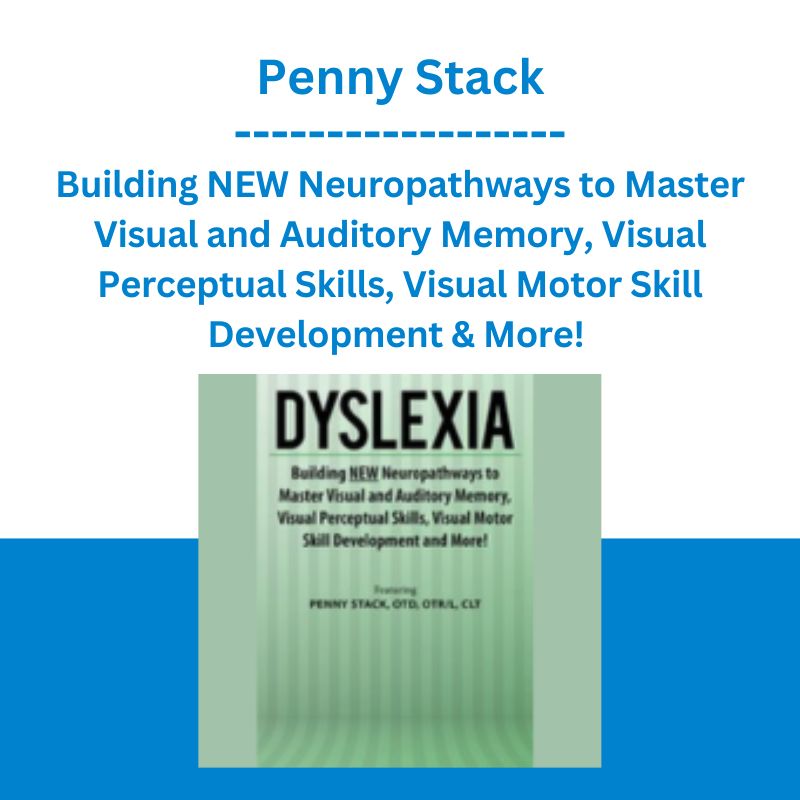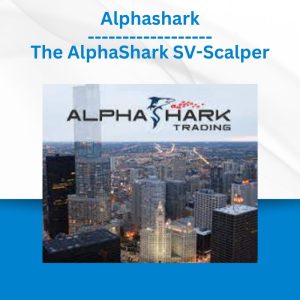*** Proof of Product ***
Exploring the Essential Features of “Dyslexia: Building NEW Neuropathways to Master Visual and Auditory Memory, Visual Perceptual Skills, Visual Motor Skill Development & More! – Penny Stack”
Dyslexia – the invisible disability that impacts 1:5 individuals!
It’s not just an issue of trying harder or paying attention.
You know the stories you hear from your clients – hours of studying just to forget it all on a test the following day, constant lack of ability to understand what they read, difficulty remembering lists or instructions beyond three, the overwhelming frustration of knowing what they want to say or do, but not being able to express it on paper or get the words out, socially withdrawn in attempt to hide their struggles.
In this seminar, you will have the opportunity to practice treatment ideas that will incorporate the use of client-centered everyday routines, games, technology, sensory, and hands-on approaches to help your client overcome the challenges of life with dyslexia.
Upon completion of this program, you will be able to immediately provide treatment to address your client’s:
- Visual perceptual skills
- Visual motor integration
- Auditory and visual memory
- Reading rate, accuracy, fluency, comprehension
- Phonetic awareness and memory
- Spelling and handwriting struggles
Speaker
Penny Stack, OTD, OTR/L, CLT, is the founding owner of Dyslexia Center of Tulsa, Oklahoma. Penny has over 26 years of experience as an occupational therapist that include working with children who have special learning needs. Penny is also a mother of a child with dyslexia who has shown great success in overcoming reading difficulties. She is certified in Handwriting Without Tears, received her master’s in occupational therapy at Samuel Merritt College, Oakland California and her doctorate degree in occupational therapy at Loma Linda University. Her research on closed head injuries and cognitive retraining has been published in Brain Injury Journal. Penny has dedicated her current research to Dyslexia and its impact on Occupation: The lived experience.
Speaker Disclosures:
Financial: Penny Stack maintains a private practice and has an employment relationship with Loma Linda University. She is a presenter with Theramoves. Penny Stack She receives a speaking honorarium and recording royalties from PESI, Inc. She has no relevant financial relationships with ineligible organizations.
Non-financial: Penny Stack is a member of the Occupational Therapy Association of California, the American Occupational Therapy Association, and the Oklahoma Occupational Therapy Association.
Objectives
- Analyze the 3 types of dyslexia and their characteristics to establish a treatment plan.
- Determine the executive cognitive functions and treatment methodologies that impact processing speed and reading comprehension.
- Employ treatment strategies to address visual perceptual, visual motor integration, auditory, and visual memory deficits to increase handwriting legibility, reading comprehension, and ability to follow multi-step directions.
- Evaluate how to integrate electronic and low tech games into treatment activities to increase reading comprehension, ability to follow multi-step directions for increased academic success.
- Apply compensatory strategies to each specific type, such as recital, chunking, and mnemonics as they apply to visual and auditory memory.
- Determine 3 strategies to improve client’s ability to recall multi-step instructions and letter sequence for spelling.
Outline
Dyslexia
- Where it originated
- Facts verses myths
- The public health impact
Assessment for Cognitive Function
- Visual and auditory memory
- Phonological awareness and memory
- Visual perceptual skills
- Visual motor skills
- Handwriting skills
- Reading rate, accuracy, fluency, and comprehension
Treatment Strategies for Redeveloping Neuropathways
- Visual perception skills to:
- Keep up with note taking in class
- Remember multi-step instructions
- Remember the order of letters when spelling a word
- Remember how to do homework once at home
- Memory skills/phonological awareness to:
- Remember more than 1 or 2 instructions at a time
- Interpret words as they were intended: cat verses hat
- Spell aloud
- Visual skills to:
- Discriminate different fonts
- Form letters or numbers
- Not write letters or numbers backwards
- Help with mixing up letters/numbers – /d/ from /b/ or /E/ from /3/
- Find their pencil in their desk
- Find matching socks when dressing
- Visual motor skills to:
- Copy notes in time to keep up with the class
- Tie shoes
- Ride a bike
- Become more coordinated
- Handwriting skills to:
- Help with slow, messy writing or letter formation or letter spacing
- Printing
- Write in cursive
- Reading/comprehension skills to:
- Read at age or grade level
- Pseudoword reading to match word reading level
Practice Treatment Interventions and Case Studies Throughout the Day
Documentation and Billing
- ICD-10 treatment diagnostic codes and CPT billing codes for reimbursement of provided services
Target Audience
- Occupational Therapists & Occupational Therapy Assistants
- Counselors
- Social Workers
- Teachers
- Speech-Language Pathologists
- School Psychologists
- Psychologists
- Physicians
- Other Helping Professionals whoWork with Children
Please see the full list of alternative group-buy courses available here: https://lunacourse.com/shop/










 Ed Ponsi - Forex Trading
Ed Ponsi - Forex Trading  Michael Golzmane - On The Birthday of the Goddess Who Gives Wealth, Receive 141 Personal and Ancestral Karma Clearings, and 141 Divine Activations of Wealth-Consciousness, as Lakshmi Grants Financial Blessings
Michael Golzmane - On The Birthday of the Goddess Who Gives Wealth, Receive 141 Personal and Ancestral Karma Clearings, and 141 Divine Activations of Wealth-Consciousness, as Lakshmi Grants Financial Blessings  Abu Fofanah - The Ad Prep Academy
Abu Fofanah - The Ad Prep Academy  Andrea Chebeleu - Recycle Your Art
Andrea Chebeleu - Recycle Your Art  Andrea Butje - Become an Essential Oil Specialist
Andrea Butje - Become an Essential Oil Specialist  Andrea Unger - Portfolio Secrets
Andrea Unger - Portfolio Secrets